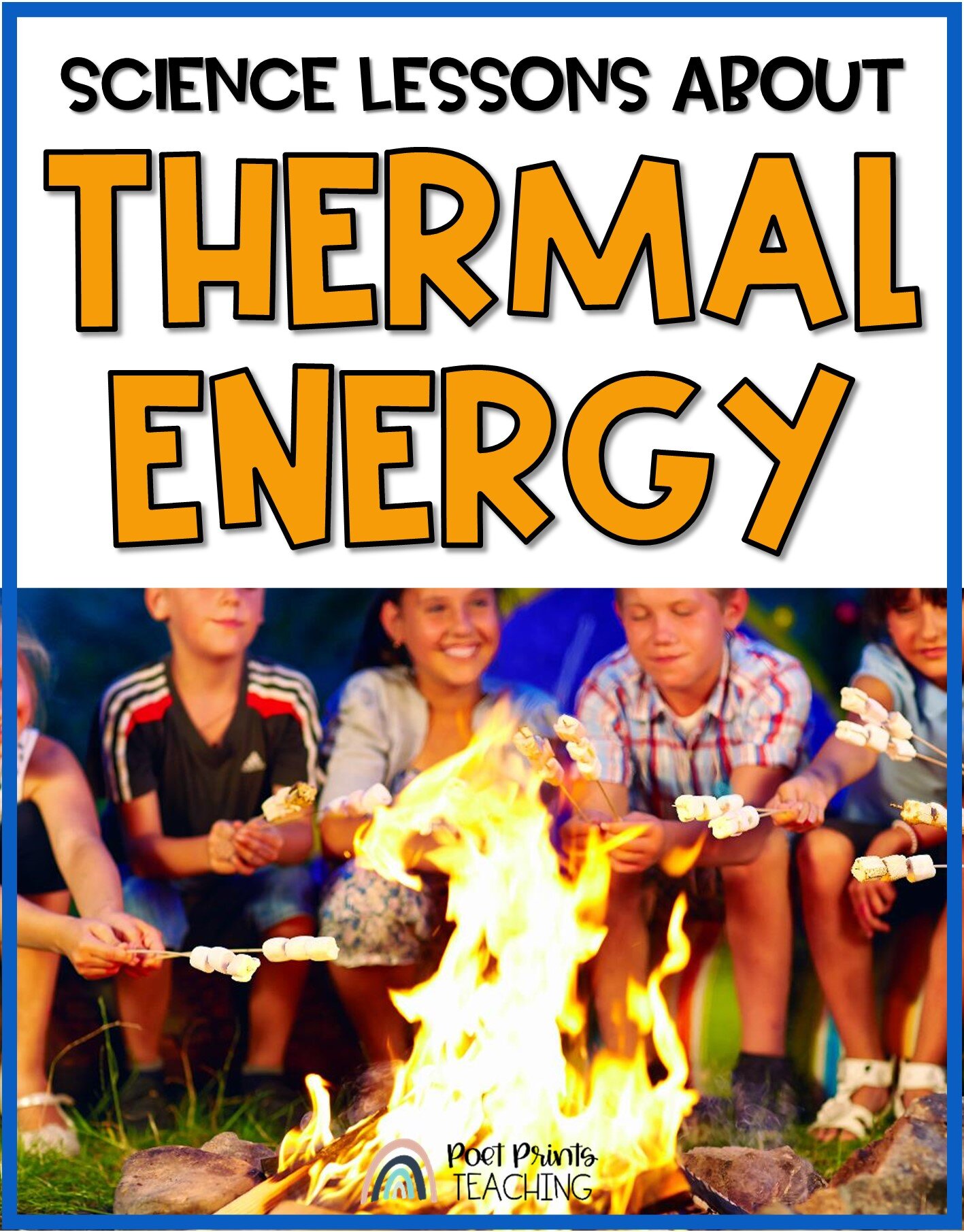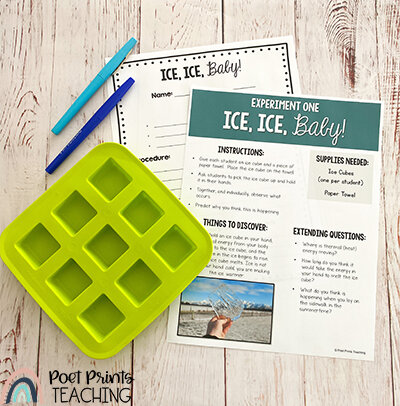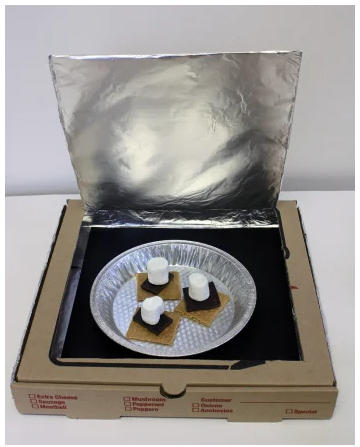How is Thermal Energy Transferred? Science for Kids
Teaching about how thermal energy is transferred in elementary science is so much fun because it’s a great unit to get totally hands-on. We build, we try, we experiment, and we really explore the different ways that heat is transferred. Here are some of my best ideas, experiments, tips, and tricks for teaching about thermal energy specifically for kids!
When do you teach thermal energy in the classroom?
I really don’t think it matters when you are teaching thermal energy, each season has its own benefits when you’re teaching about how heat is transferred. I’ve always taught it during the winter when we can dive in to the concepts of conductors and insulators (because brrrrr, it’s cold outside). This way, we can warm up with a conducting mug of hot cocoa.
However, the spring/summer also works, because feeling the warmth of the sun allows kids to make great connections about how the sun is radiating heat. Plus, a warm sun helps some fun projects, like this solar oven, really work!
The only timeline I follow is that I make sure I’ve covered ‘matter’ first in my curriculum. So many of our discussions about thermal energy and heat transfer refer to ‘particles’ and I want the kids in my science classroom to have a good understanding of matter, and how particles move in different states of matter. I don’t want them to be confused when I mention that “the atoms bump into each other”, because we’ve already covered ‘what is an atom’ in previous lessons!
Where do you start with thermal energy?
I start every single science unit with a handful of teacher-led lessons. Before we head into the experiments, inquiry, and student-led learning portions I always spend a class or two teaching vocabulary and new concepts. I find that front-loading this knowledge gives students the confidence to explore and ask questions later on.
In this time, we usually do some non-fiction reading about our new science topic (either reading passages at my students’ level, or books from the library) and then head to vocabulary practice. I’ll set up a Science Word Wall with our new vocabulary and we’ll play some hands-on games until students are familiar with the vocab for our unit. In thermal energy, I want them to be comfortable with words like convection, conduction, radiation, energy, conductor, insulator, and atom before we even begin.
Get hands-on with experiments
Learn about the ways thermal energy is transferred in as many hands-on ways as possible. While teacher-led learning is fine, hands-on experiences is what will make the learning ‘stick’. So when I’m teaching thermal energy I try my best to have as many hands-on science activities as possible.
To teach conduction, we’ll have tea (or hot cocoa!) together. If you are allowed to share beverages with your students, this is a great chance to make science class extra special! Pour each student a warm mug of tea and allow them to hold the warm, but not too hot, mug in their hands. They will feel the heat transfer rom the mug into their cool hands. This is conduction!
To teach radiation I like to get outside on a warm and sunny day to feel the sun radiate and warm up our bodies. Too cold for this? Try gathering around a space heater! (The heat from a candle is also radiation... but feel the heat from this one with caution around little hands!)
I love experiments that need very few supplies. In my first few years of teaching, I had access to very few additional materials at my school. My budget was unbelievably small (teacher life!) So my desire is always to find activities that can be done in classrooms for almost no money. Ice Ice Baby is one of my favorites. If you can freeze a class set of ice cubes, you are set! This experiment asks students to MELT an ice cube in their bare hands to experience heat transfer from their warm palms into the frozen ice cube. The full set of instructions for this fun and simple experiment can be found in my Thermal Energy Science Unit.
Have a bit more time and a few more supplies? These instructions guide you through how to use heat energy to make s’mores in a classroom solar oven!
Let us plan your thermal energy unit!
Looking for a whole unit? The complete thermal energy science unit features nonfiction reading passages, vocabulary, teacher-led lessons, 3 hands-on experiments, a quiz, and detailed lesson plans all along the way. No planning needed, just print and that’s it!




